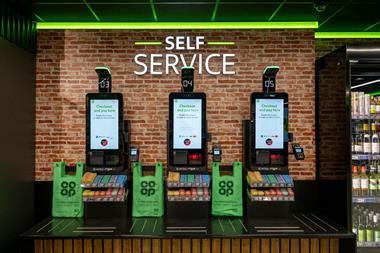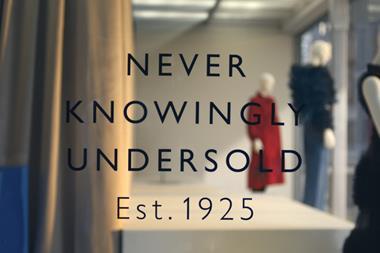Flashy images, picture tools and product videos might look impressive, but do they hold any sway over customers? Joanna Perry finds out
The way product is showcased in stores is something UK retailers pride themselves on. Visual merchandisers rule their windows and store displays, and woe betide anyone who interferes.
As sales shift onto the web, retailers must attempt to replicate this dedication to presentation with the product images and other tools they use to portray their products. But all this costs money, in terms of models, photographers, production and hosting such rich media content on a site.
Research published earlier this year by rich media technology platform provider Adobe Scene7 found that lifestyle imagery, alternative views, audio/animation and zoom were the top rich media features that sites have already deployed. The study also showed that the top four most effective features were, in order of impact: alternative views, lifestyle imagery, zoom and visual filtering/advanced search.
Upmarket fashion site My-wardrobe.com has introduced photos of products shot on a live model rather than a mannequin for the first time in the past month. Chief operating officer Andrew Curran says that while a number of customers will resist change, on the whole the move has been well received. He says that the uplift has been visible within a week, and that the research the retailer carried out and read before making the move suggested that this would be the case.
My-wardrobe.com creates all of its product imagery in-house, and has employed a full-time model called Hannah. Curran says that it has been difficult finding good models, because of the cost, and also finding the right look for the retailer’s brand. “They can’t be too young and must have a classic look,” he explains.
Using a model on a day rate can cost £400 to £500 per day, and for this you will get a maximum of 30 styles photographed, with a total of 90 pictures. Curran says that the upside of working with live models is that much less Photoshop retouching is required than when mannequins are used, when all the joins must be airbrushed out.
Digital marketing expert Leon Bailey-Green points out the benefits of having clothes displayed on real people. “Where it does work is in plus-size, because that is where people really want to know how tightly clothes fit, and how they drape etc. Photos with models will reduce returns there. But even if you are not the same size as the model, you will get an idea of what it is like,” he says.
Bailey-Green says that it can be useful to let customers see products on different models, and in future sites may allow customers to choose a model that looks most like them, then see all products viewed on that particular model.
Next-generation imagery
My-Wardrobe.com is on a development path with its product imagery. The move from mannequins to models is just the first step. The next stage – likely to be in late September, according to Curran – will involve the introduction of product videos. From here, he intends to bring in more interactive elements, although he says that it is too early to elaborate on what this will entail.
This may be all well and good for fashion, but how important are such special features for other retail sectors?
Mydeco head of site Nicky Drake says that the furniture and homewares shopping aggregator has analysed the retailers it works with in terms of who generates the best conversion rates.
She says that the top 20 per cent tend to have all the best product imagery tools such as zoom, multiple images and 360-degree views. While higher conversion rates can’t directly be correlated with these features, Mydeco has produced a best of breed guide based on what these top sellers are doing on their sites to help those whose conversion rates are not as good.
The tools on Mydeco’s site allow consumers to upload their own photos and then decorate them, choosing real decorating products to preview different colours and styles. Drake admits that this is a “power user tool” at the moment, meaning that only the fairly tech-savvy are comfortable using it, but she thinks that it will become more mainstream.
Drake says that it is interesting to consider the relative merits of lifestyle images compared with cut-out product images. She finds that lifestyle images, showing products within scenes, help inspire customers, but more basic cut-out images are also important for the use of features such as zoom or 360-degree views.
She adds that, for the product segments in which Mydeco operates, video is not “as valuable as some other tools”.
However, for fashion retailers the business case is stronger. Adobe Scene7 EMEA marketing manager Max Childs points out that Shop Direct has around 1,500 videos, including on its Very.co.uk site. Although it is not a high-end retailer, videos are still driving sales.
Childs says that interactivity in video is also improving, meaning that customers will be able to pause videos, zoom in, or make the model do extra spins to get a feel for how the product moves.
Some retailers, whatever they sell, choose to outsource the production and even hosting of photography and video to a third-party specialist.
Lee Friend is managing director and executive producer for Fashshot.com and Packshot.com, which specialise in product and fashion photography respectively. He says that zoom is now standard, but even that is not the be-all and end-all, as only around 50 per cent of site visitors click through to zoom in on a product image. This means it is important to support the main image with at least two more shots showing details, whether you are selling fashion or homewares products.
For some products, such as shoes and handbags, he says that 360-degree spin is important. However, “we don’t do anything unless it works for retailers”, he says, adding that where retailers trial a new type of photography or image tool his company will bear the cost if it can’t guarantee results. Friend adds that retailers must strip out the effect of organic growth when they are analysing the effect that different photography has.
Connection limitations
Despite all the great photo and video technology out there, retailers also need to be realistic about the broadband speeds their customers will have, and can’t assume that everyone is looking at e-commerce sites from high-speed corporate networks. So where you have a product video, for instance, Friend says that it is important to have a still image as the primary image so that it will load quickly on the page.
Curran says that working with a third party to produce product pictures just isn’t the right model for his business. “We’ve looked at it time and again, and feel that from a styling point of view it isn’t right for us. Where there is a creative choice about styling, which products you put together and accessories, we want control over that,” he says.
He adds that a certain proportion of the pictures produced in-house are vetoed as not right for the brand, and this would likely be greater working with a third party. In the early days of the site a few brands, including Mulberry and Dolce & Gabbana, requested to see every image created featuring their products for the first season or two, but Curran says that as trust has grown this no longer happens.
He is also honest that the investment his business is making is possible because of My-wardrobe.com’s business model, but might not be right for many. “Our average order value is £250 to £300 on new-season stock. The way we style and turn around images wouldn’t work if we had an average order value of under £100,” he says.
Friend says that it can cost a major retailer £500,000 extra to make a change such as moving from mannequins to real models for its product photography. He adds: “Asos raised the bar with models, and says that it is spending £4m a year on models. But sometimes one has to argue whether a retailer is spending for its brand’s sake or its sales’ sake. If you are spending for your brand, then it shouldn’t come out of your e-commerce budget.”
This point hits the nail on the head. You can have all kinds of elaborate images, image tools, videos and even audio clips on your site, but unless you can be confident that this has a direct impact on sales and profits, it can be a costly vanity exercise.


























3 Readers' comments